
How to Use Raspi 3B+: Examples, Pinouts, and Specs
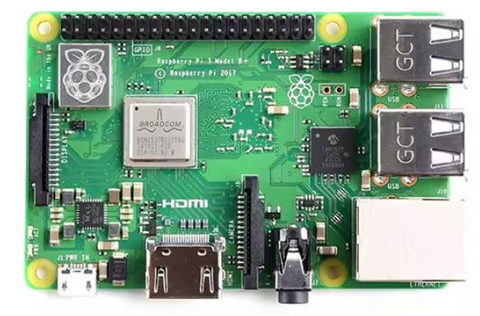
 Design with Raspi 3B+ in Cirkit Designer
Design with Raspi 3B+ in Cirkit DesignerIntroduction
The Raspberry Pi 3 Model B+ is a small, affordable single-board computer designed for a wide range of applications. It features a 1.4 GHz 64-bit quad-core ARM Cortex-A53 CPU, 1 GB of RAM, built-in Wi-Fi (802.11ac), Bluetooth 4.2, and multiple USB ports. This versatile device is widely used in education, DIY electronics projects, IoT applications, and as a platform for software development and prototyping.
Explore Projects Built with Raspi 3B+
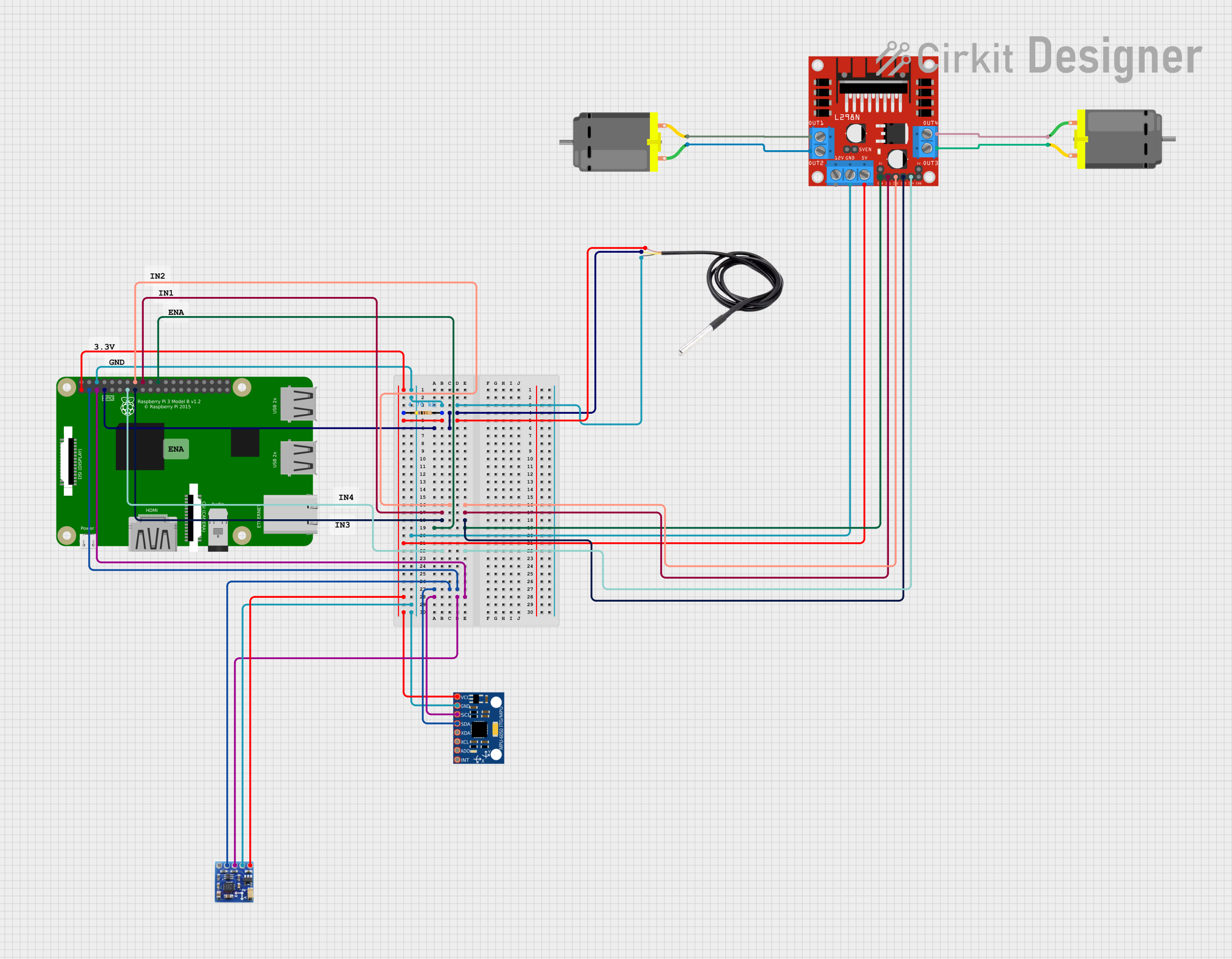
 Open Project in Cirkit Designer
Open Project in Cirkit Designer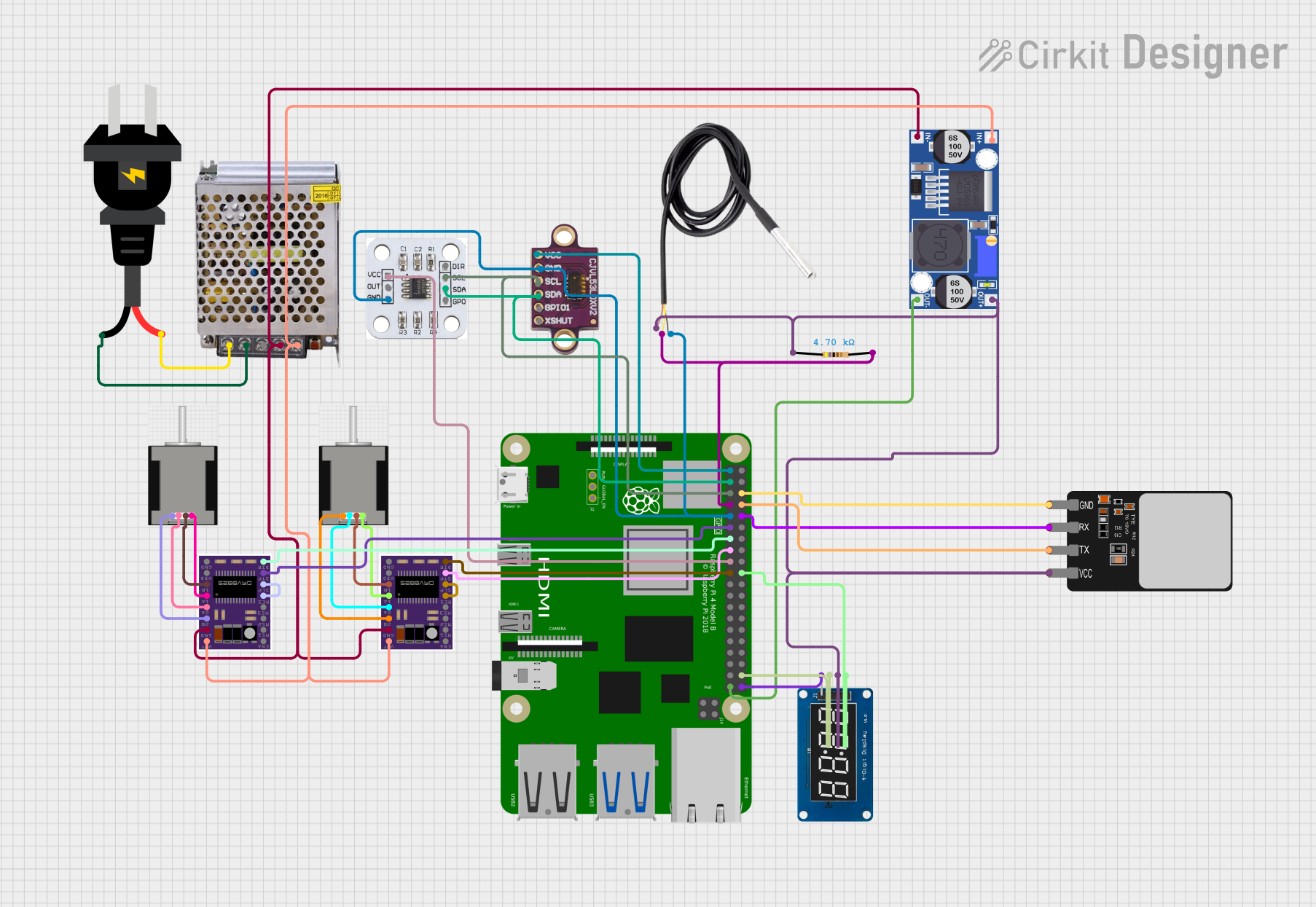
 Open Project in Cirkit Designer
Open Project in Cirkit Designer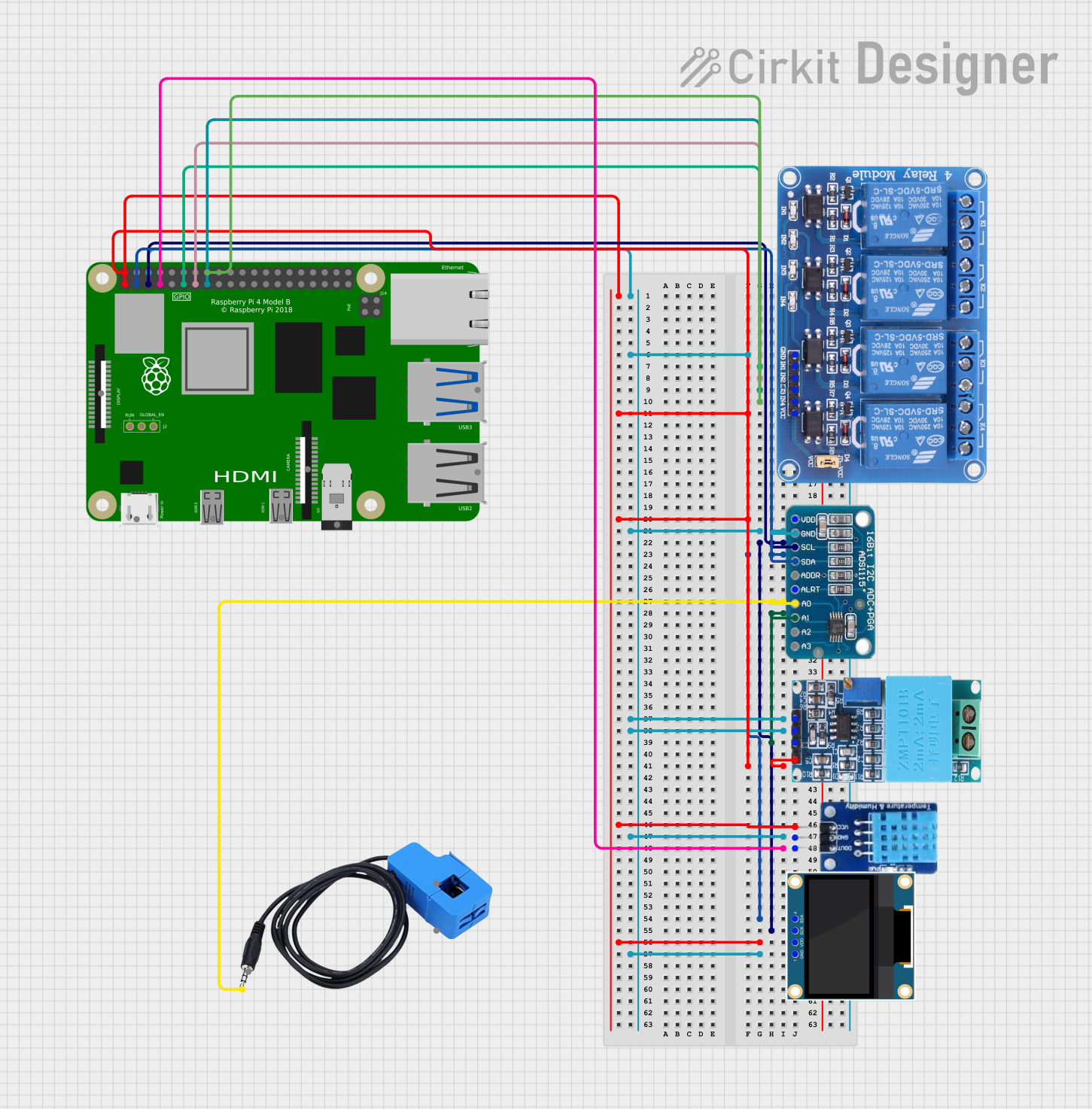
 Open Project in Cirkit Designer
Open Project in Cirkit Designer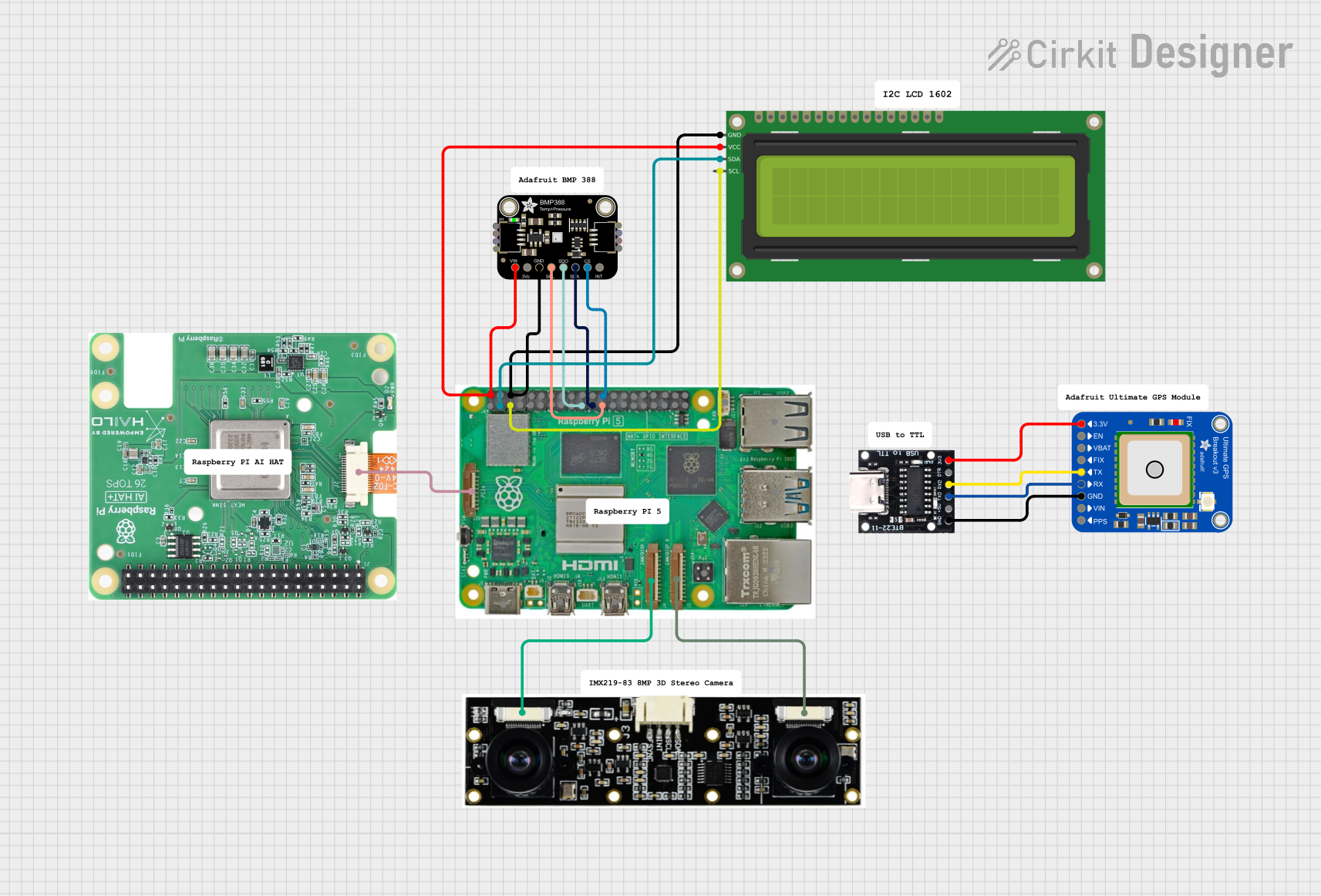
 Open Project in Cirkit Designer
Open Project in Cirkit DesignerExplore Projects Built with Raspi 3B+

 Open Project in Cirkit Designer
Open Project in Cirkit Designer
 Open Project in Cirkit Designer
Open Project in Cirkit Designer
 Open Project in Cirkit Designer
Open Project in Cirkit Designer
 Open Project in Cirkit Designer
Open Project in Cirkit DesignerCommon Applications and Use Cases
- Educational Projects: Teaching programming, electronics, and computer science.
- DIY Electronics: Building robots, home automation systems, and IoT devices.
- Media Centers: Running media server software like Kodi or Plex.
- Retro Gaming: Emulating classic gaming consoles.
- Prototyping: Developing and testing software or hardware solutions.
- Edge Computing: Running lightweight AI/ML models or data processing at the edge.
Technical Specifications
Key Technical Details
| Specification | Details |
|---|---|
| Processor | 1.4 GHz 64-bit quad-core ARM Cortex-A53 CPU |
| RAM | 1 GB LPDDR2 SDRAM |
| Wireless Connectivity | Dual-band 802.11ac Wi-Fi, Bluetooth 4.2 |
| Ethernet | Gigabit Ethernet (limited to ~300 Mbps due to USB 2.0 interface) |
| USB Ports | 4 × USB 2.0 ports |
| GPIO Pins | 40-pin GPIO header (compatible with previous Raspberry Pi models) |
| Video Output | HDMI, Composite Video (via 3.5mm jack) |
| Audio Output | 3.5mm stereo audio jack, HDMI |
| Storage | MicroSD card slot |
| Power Supply | 5V/2.5A via micro-USB or GPIO header |
| Dimensions | 85.6mm × 56.5mm × 17mm |
| Weight | 50g |
GPIO Pin Configuration
The Raspberry Pi 3 Model B+ features a 40-pin GPIO header. Below is a summary of the pin configuration:
| Pin Number | Pin Name | Description |
|---|---|---|
| 1 | 3.3V Power | 3.3V power supply |
| 2 | 5V Power | 5V power supply |
| 3 | GPIO2 (SDA1) | I2C Data |
| 4 | 5V Power | 5V power supply |
| 5 | GPIO3 (SCL1) | I2C Clock |
| 6 | Ground | Ground |
| 7 | GPIO4 | General-purpose I/O |
| 8 | GPIO14 (TXD0) | UART Transmit |
| 9 | Ground | Ground |
| 10 | GPIO15 (RXD0) | UART Receive |
| ... | ... | ... (Refer to the official GPIO pinout) |
For the full GPIO pinout, refer to the official Raspberry Pi documentation.
Usage Instructions
How to Use the Raspberry Pi 3 Model B+
Powering the Device:
- Use a 5V/2.5A micro-USB power supply to power the Raspberry Pi.
- Alternatively, power it via the GPIO header (pins 2 and 6 for 5V and Ground).
Setting Up the Operating System:
- Download the official Raspberry Pi OS (or other compatible OS) from the Raspberry Pi website.
- Flash the OS image onto a microSD card using tools like Balena Etcher.
- Insert the microSD card into the Raspberry Pi's card slot.
Connecting Peripherals:
- Connect a monitor via HDMI, a keyboard and mouse via USB, and optionally, an Ethernet cable for wired networking.
- Alternatively, use Wi-Fi for wireless connectivity.
Booting Up:
- Power on the Raspberry Pi. It will boot into the installed operating system.
- Follow the on-screen setup instructions to configure Wi-Fi, regional settings, and other preferences.
Using GPIO Pins:
- Use the GPIO pins to interface with external components like LEDs, sensors, and motors.
- Libraries like
RPi.GPIO(Python) orpigpiocan be used to control GPIO pins programmatically.
Example: Blinking an LED with Python
Below is an example of how to blink an LED connected to GPIO pin 17 using Python:
Import the necessary library
import RPi.GPIO as GPIO import time
Set up GPIO mode and pin
GPIO.setmode(GPIO.BCM) # Use Broadcom pin numbering GPIO.setup(17, GPIO.OUT) # Set GPIO 17 as an output pin
try: while True: GPIO.output(17, GPIO.HIGH) # Turn on the LED time.sleep(1) # Wait for 1 second GPIO.output(17, GPIO.LOW) # Turn off the LED time.sleep(1) # Wait for 1 second except KeyboardInterrupt: # Clean up GPIO settings on exit GPIO.cleanup()
Important Considerations and Best Practices
- Power Supply: Always use a reliable 5V/2.5A power supply to avoid undervoltage issues.
- Cooling: For intensive tasks, consider using a heatsink or fan to prevent overheating.
- Static Protection: Handle the board carefully to avoid static damage to components.
- GPIO Safety: Avoid exceeding the 3.3V limit on GPIO pins to prevent damage.
Troubleshooting and FAQs
Common Issues and Solutions
The Raspberry Pi does not boot:
- Ensure the microSD card is properly inserted and contains a valid OS image.
- Check the power supply for sufficient voltage and current.
Wi-Fi connectivity issues:
- Verify the Wi-Fi credentials and ensure the network is within range.
- Update the Raspberry Pi OS to ensure compatibility with your router.
Overheating:
- Use a heatsink or fan for better thermal management.
- Avoid running the Raspberry Pi in enclosed spaces without ventilation.
GPIO pins not working:
- Double-check the pin configuration and connections.
- Ensure the correct GPIO numbering mode (BCM or BOARD) is used in your code.
FAQs
Can I use the Raspberry Pi 3 Model B+ as a desktop computer?
- Yes, it can handle basic tasks like web browsing, document editing, and media playback, but it is not suitable for heavy workloads.
What is the maximum storage capacity supported?
- The Raspberry Pi 3 Model B+ supports microSD cards up to 32GB (FAT32) or larger cards formatted with exFAT.
Can I power the Raspberry Pi via USB ports?
- No, the USB ports are for peripherals only. Use the micro-USB port or GPIO header for power.
Is the Raspberry Pi 3 Model B+ compatible with HATs?
- Yes, it is compatible with most Raspberry Pi HATs (Hardware Attached on Top) that follow the standard GPIO pinout.
For additional support, refer to the official Raspberry Pi documentation or community forums.